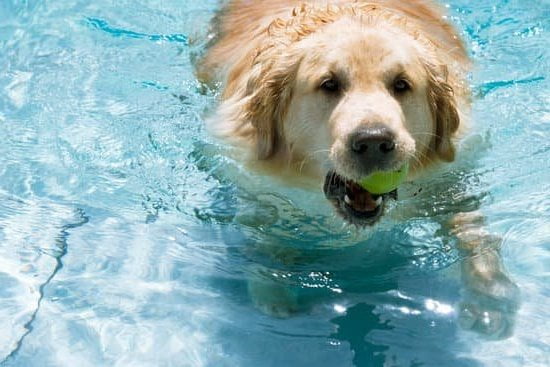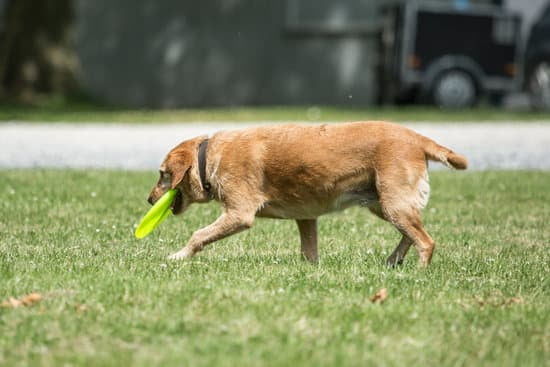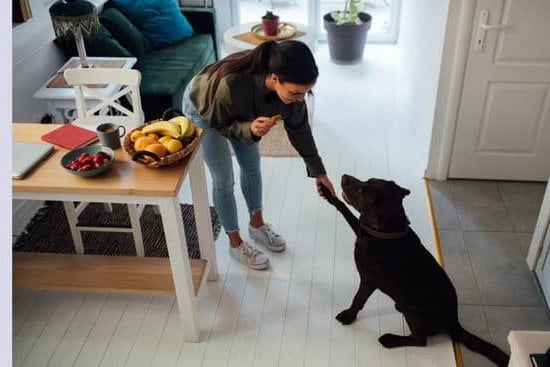Introduction
An aggressive dog is one that exhibits behaviors such as growling, snapping, or lunging when it perceives a threat. Training can help an aggressive dog learn how to respond in a more appropriate manner and prevent further aggressing behavior. There are many benefits to training an aggressive dog; it can improve the relationship between the dog and its owner, reduce stress for both people and pet, promote better physical health through exercise and mental stimulation, and instill obedience to commands. Training can also develop better communication skills between the dog and its owner which will enable them to be able to recognize and correct problem behavior patterns before they escalate into full-blown aggression.
Recognizing Signs of Aggression in Dogs
Yes, training can help an aggressive dog. Training is the best way to ensure that a dog’s behavior stays in check and to teach them how to respond properly in any given situation or environment. Training can also help an aggressive dog identify the signs of their aggression as they arise and take measures to reduce or eliminate them. Common signs of aggression in dogs include barking, growling, biting, lunging at people or other animals, and urine marking.
When an aggressive issue arises with a pet, it is important for owners to start addressing the problem right away with the help of a qualified and experienced professional trainer. A reliable trainer will assess the behavior, diagnose potential causes for the aggression, and set up a plan of action to address the behavior through positive reinforcement training tactics designed specifically for that animal’s needs. This approach helps redirect unacceptable aggressive behaviors towards more desirable ones such as obedience commands. As part of this method, pet owners should maintain consistent reinforcement from both during and after training sessions helping their dog understand expectations remain clear so inappropriate behaviors are minimized. Additionally, trainers can also provide additional guidance and support on managing aggression issues with verbal encouragement, rewards for good responses, and implementation of signals that let dogs know when it’s time to stop what they are doing. Through ample practice over time with structured goals in mind owners may be able to overcome behavior issues in their pets which was once thought impossible.?
Reasons Why Training is Essential for Aggressive Dogs
Training can be an effective way to help an aggressive dog. Training can give both the dog and owner the tools to control the aggression and teach new and appropriate behaviors. Through training, a dog learns when it’s okay to express their emotions, which helps prevent situations where they are expressing them in an unhealthy manner. Training can provide an outlet for the aggression or fear that is motivating the behavior, replacing it with positive interactions instead. This can help an aggressive dog feel safer, less anxious, and more able to trust humans again. Additionally, it teaches both the owner and dog how to identify triggers and warning signs so they know when to step in or reset in order avoid negative outbursts. The goal is to gain control over the aggression instead of it controlling them. Training also helps establish clear communication between a dog and its owner which prevents frustration from misunderstandings on both sides. Finally, continued training can lead to better self-control for a dog exhibiting aggression by strengthening the obedience of commands such as “stay” or “leave it”.
Considering Your Dogs Individual Needs for Training
When trying to help an aggressive dog, it’s important to evaluate their individual needs and temperament. Understanding their triggers and training style is key in providing the best care to ensure a well-transformed pup. Depending on the type of aggression or fear present, different methods of training may be needed.
Some pups might respond best to positive reinforcement or clicker training; where treats are used as a reward for good behavior during interactions with new people. Clicker training is less intrusive than using verbal commands in these situations as it follows more natural canine behaviors that don’t rely on verbal communication.
On the other hand, some dogs may require negative reinforcement such as again tactile cues (light taps on their back), sound cues (a raise in pitch), or verbal commands in order to redirect their aggression away from people or objects they feel threatened by. Other tools like head halters, leashes and muzzles can also effectively provide more control while still allowing them to enjoy a normal life outdoors.
Lastly, dogs require lots of patience and consistency when dealing with aggression. It’s essential that everyone involved uses the same methods of training when interacting with them so they understand what kind of behavior is expected and accepted in social situations. Time, love, understanding and regular visits with a professional trainer will go a long way in helping reform your aggressive pup into a sociable companion over time!
Choosing the Most Effective Training Method for Your Dog
Yes, training can help an aggressive dog. It is important to have patience and understand that changing a dog’s behavior takes time and effort. Aggressive behaviors are typically rooted in fear or anxiety, so the most effective method of training for an aggressive dog is to address their fear or anxiety by providing them with positive reinforcement and support rather than punishment.
Positive reinforcement should be used when trying to change any unwanted behavior, as this will help ensure the safety of everyone involved and create a bond between you and your pet. Positive reinforcement should be immediate and consistent; reward your pup whenever they respond positively with treats, toys, verbal praise or gentle petting on the chest. Additionally, avoid any use of physical punishment or harsh words in order to discourage negative behavior.
It is also important that you work closely with a qualified professional who has experience dealing with aggressive dogs in order to properly identify any underlying causes of aggression such as past trauma or lack of socialization. A professional will know how to program tailored desensitization exercises based on these insights which can help manage existing aggressive behaviors while teaching more appropriate responses – while avoiding further traumatizing your pet.
The Basics of Obedience Training for Aggressive Dogs
Yes, training can help an aggressive dog. Obedience training for aggressive dogs is a great way to give owners better control and understanding over their pet’s behavior – especially in triggering situations or around other animals or people. The idea is to teach the dog how to react in specific situations, giving it clear expectations and boundaries that it needs to obey.
When teaching obedience training to an aggressive dog, trainers will typically start with basic commands such as Sit, Stay and Come as well as hand signals. This helps the dog learn behaviors non-verbally and builds a sense of trust between owner and pet. As the training progresses, more complex behaviors can be introduced such as walking on a leash without pulling or jumping up on people. Additionally, rewarding the desired behaviors helps increase motivation and reinforce those behaviors across all environments.
A key part of obedience training for aggressive dogs is proper socialization so that the pet learns how to act safely around other animals and people without resorting to aggression or fearfulness, which could become dangerous in certain circumstances. Depending on the temperament of each individual animal, specific exercises from basic introductions all the way up through supervised playtime with other pets can be used to help calm fear-based aggression and create controlled responses in potentially threatening situations.
Implementing Positive Reinforcement Training for Aggressive Dogs
Positive reinforcement training is a great way to help an aggressive dog. This type of training emphasizes rewards for desired behavior and avoidance of punishment. It teaches dogs how to interact with people and other animals in constructive ways, rather than continuing their aggression. It also reinforces positive behaviors instead of focusing on negative behaviors.
In order to successfully implement positive reinforcement training for your aggressive dog, it is important to have patience and consistency. Consistently rewarding the desired behavior while avoiding punishment will enable your dog to begin understanding what they are allowed or not allowed to do in certain situations, allowing them to develop healthier ways of interacting with both humans and animals. You should also focus on short training sessions as this will be less overwhelming for the dog as well as you. Be sure to praise your pooch frequently when they exhibit desired behaviours, which will allow them to understand and learn this faster. Lastly, work with an experienced animal specialist who can provide guidance throughout the process if needed.
Harnessing the Power of Leash Training for Aggressive Dogs
Yes, training can definitely help an aggressive dog! Leash training is a great way to start. It provides a measure of control, allowing you to maintain distance and keep the dog from becoming reactionary as much as possible. Teaching basic commands such as “sit” or “stay” teaches composure and also gives the handler a way to direct the dog away from aggression or potentially dangerous situations. Properly introducing your dog to other dogs and people in a controlled environment is key for avoiding aggression in social situations. You may also benefit from doing positive reinforcement-based training with your pet so that he learns desired behaviors are rewarded versus negative behavior being punished. In addition, teaching your dog alternative behavior to respond to situations rather than using aggression will help him become more comfortable in his environments. Finally, giving your pet interactive toys and puzzle feeders can also help divert attention away from potential triggers while providing beneficial mental stimulation that keeps them calm when they are interacting with others. In short, professional training received by an experienced canine behaviorist can be truly transformative for an aggressive pooch!
Encouraging Socialization with Other Dogs for Aggressive Dogs
Can training help an aggressive dog? Absolutely. Training is essential for teaching an aggressive dog to trust, tolerate, and eventually get along with other dogs. The key is to create positive experiences with other dogs in a safe and controlled environment. Start by introducing your dog to one or two calm and friendly dogs at a time. Make sure the dogs are watched closely, and use verbal cues and commands like “sit” or “stay” to keep your aggressive pup relaxed. Reward them with treats and praise when they behave well around the other animals. If need be, take short breaks while playing with others until you’re able to observe manners consistently and confidently. In addition to interactions with other dogs, it is important that your aggressive dog participates in obedience training as it will teach them proper discipline as well as modify their behavior. Seek the help of a reliable professional trainer who understands how to deal with aggression in order for your dog to have the best possible outcome from these sessions. With consistent practice and patience, there’s no doubt that an aggressive dog can learn to overcome any issues related to aggression towards animals or humans!
Accessing Professional Resources for Training Aggressive Dogs
Yes, training can absolutely help an aggressive dog. Professional resources that specialize in training animals and dogs with aggression may be able to offer additional methods and techniques tailored to your individual dog’s needs in order to address the issue. While professional training should always be incorporated into any effort to lessen aggressive behavior, owners should also take the lead by being consistent and confident in their approach when interacting with their animal. Reinforcing positive behaviors, understanding a dog’s body language, and providing adequate exercise are all effective ways to start on the path of achieving results when it comes to more serious behavior issues involving aggression.
Conclusion
Training an aggressive dog can be a daunting challenge, but the effort and dedication are worth the long-term benefits. Through professional guidance and consistent reinforcement, an owner can restore balance in their relationship with their pet. When suitably managed and trained with patience, an aggressive dog can still be a loving part of any family. Training can also ensure that their behavior is less likely to have a negative effect on other people or animals. With everyone in the home adhering to regular commands, safety should always be the priority when it comes to cohabitating peacefully with a pet that has been known for exhibiting aggression.

Welcome to the blog! I am a professional dog trainer and have been working with dogs for many years. In this blog, I will be discussing various topics related to dog training, including tips, tricks, and advice. I hope you find this information helpful and informative. Thanks for reading!





